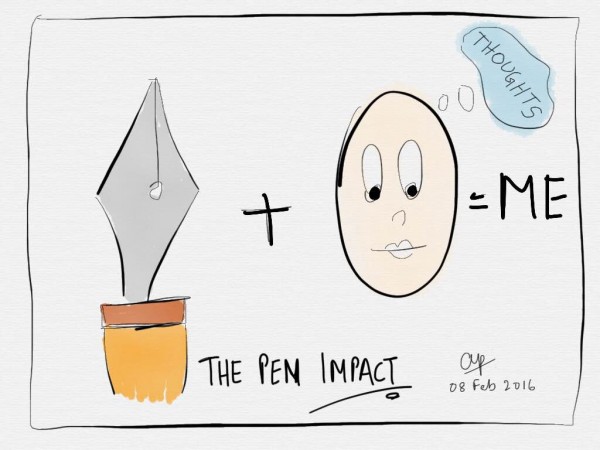Malala Yousafzai has been quoted as saying: ‘Let us remember: One book, one pen, one child, and one teacher can change the world.’ I agree with her because I think it is a pen that has anyway impacted our lives in more than one way.
The pen exists as a Noun in the dictionary that defines it as ‘a small, hollow, ink filled object which disperses said ink onto various writing mediums, like paper, cocktail napkins, or anything suitably porous.’ But beyond this rather physical definition is the thought that it effectively transfers from the abstract universe of a mind to a form that can be shared.
‘Well, the oral tradition too does just that,’ said Specky, my wife.
I told her that the oral tradition is all about ideas that are spoken and a lot of meaning may be lost over time. Communication and comprehension would play in ways that may distort the actual impact of whatever was being told. But the pen converts thoughts into words and sentences that are written with deliberation and can be read in the form in which they were written by multitudes who may read it all sitting hundreds of miles away and even decades later… and though our interpretation and comprehension may still distort the message, the original communication still stays. And so the letters that Nehru wrote… or the ones that lovers may have written hundreds of years back, are still here without a single word lost.
Writing was most likely first invented, in Mesopotamia in about 4000BC, and The Guardian goes on to add that ‘the tools and media used for writing have changed many times: from Sumerian tablets to the Phoenician alphabet of the first millennium BC; from the invention of paper in China about 1,000 years later to the first codex, with its handwritten sheets bound together to make a book; from the invention of printing in the 15th century to the appearance of ballpoint pens in the 1940s.’ This is an art that connects the mind with coherent thoughts and also helps us remember them.
Write it to remember it
I remember when I was in school, the only strategy that I applied to score more marks or to answer questions well was to write almost everything that I read. I was able to remember entire chapters from the classics that I effectively quoted from for my answers. As I drew for my botany, zoology and physics papers, I allowed the right and left hemispheres of my brain develop symmetrically. I did all this without knowing that this is what makes the brain sharper and more intuitive. Susan Sontag said in a 1995 interview with the Paris Review: ‘I write with a felt-tip pen, or sometimes a pencil, on yellow or white legal pads, that fetish of American writers. I like the slowness of writing by hand.’ The pen helped channel her creative out-pouring in the way that her brain had concocted them, so to say. I still do this when I am writing a poem. The longer forms have, of course, been transferred to banging the keyboard but I knew inside me that if I were to write all this in long-hand, the output would probably have more depth and more sincerity. Even Roland Jouvent, head of adult psychiatry at Pitié-Salpêtrière hospital in Paris says that ‘Handwriting is the result of a singular movement of the body, typing is not.’ It is like saying that the body and mind or experiences and interpretations come together to create thoughts that are worthy of being put to paper. They flow through your pen.
Yes, I do use the stylus too or the digital pen and I find it a reasonably good replacement of the traditional pen. Yet I always carry my fountain pen with me and love to write with it on paper and those moments are the ones that I cherish most. I agree with James Joyce when he wrote: ‘No pen, no ink, no table, no room, no time, no quiet, no inclination.’
.
.
.
.
This blog post is inspired by the blogging marathon hosted on IndiBlogger for the launch of the #Fantastico Zica from Tata Motors. You can apply for a test drive of the hatchback Zica today.
.
.
Arvind Passey
08 February 2016









